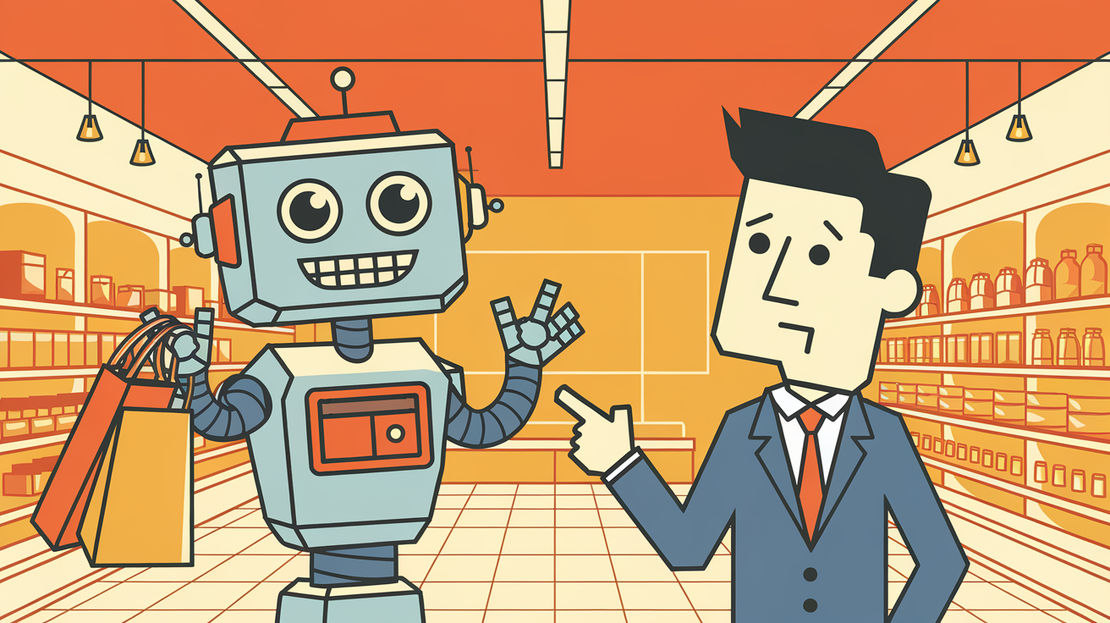
Boost Conversions: Elevate Your E-commerce UX with Innovative Ideas
- Marta Kaczor
- Ux , Conversion rate
- December 17, 2024
Table of Contents
Explore groundbreaking UX ideas that can revolutionize your e-commerce store and significantly increase conversion rates. This comprehensive guide covers innovative techniques such as user persona mapping, A/B testing for design elements, and the integration of chatbots for real-time assistance. Understand the importance of user feedback in shaping your design decisions and how to leverage data analytics for continuous improvement. By embracing these modern UX concepts, your online store can achieve a dynamic and engaging environment, encouraging users to complete their purchases and become loyal customers.
The Crucial Role of UX in Boosting E-commerce Conversions
In the fast-paced world of e-commerce, user experience (UX) is more than just a design feature; it’s crucial for keeping customers happy and ensuring product success. A smooth, easy shopping journey can be the deciding factor between completing a purchase and leaving items in the cart. Studies reveal that users are 88% less likely to revisit a site after a negative experience. This statistic emphasizes the urgent need for e-commerce platforms to focus on UX improvements that align with consumer needs and behaviors.
Additionally, putting user feedback at the top of the priority list can lead to significant revenue growth. Brands that pay attention to their customers often experience sales increases of up to 20%. For example:
- A well-known fashion retailer revamped its website based on user insights.
- This change resulted in a 15% boost in conversion rates within just a few months.
This example highlights the value of incorporating customer perspectives into the design process, fostering loyalty and encouraging repeat business.
By making UX a central part of their strategy, e-commerce executives can tap into new levels of engagement and profitability, ensuring their offerings resonate with consumers.
User Persona Mapping: Tailoring the Shopping Experience to Your Audience
User persona mapping is essential for crafting personalized marketing strategies that can boost conversion rates by 10 to 20%.
By exploring user demographics and behaviors, businesses can create targeted promotions and product suggestions that really connect with their audience.
For example, if data shows that a group of customers prefers eco-friendly products, tailored marketing campaigns can highlight sustainability, leading to greater engagement and conversion.
Using insights from user persona mapping not only improves the shopping experience but also builds trust with consumers, who appreciate relevant offers that cater to their specific needs.
Understanding the motivations and pain points of different user segments allows for compelling narratives around products, fostering a sense of connection that can enhance loyalty.
A tech gadget retailer might find that:
- Younger customers value technical specifications
- Older customers prioritize ease of use
This insight can help shape tailored content for each group, boosting sales while making the shopping experience more enjoyable.
In the end, investing in user persona mapping goes beyond a simple marketing tactic; it’s a strategic approach that deepens understanding of the audience, leading to improved customer satisfaction and long-term success.
Harnessing A/B Testing for Design Optimization
Incorporating A/B testing into design strategies shifts decision-making from personal opinions to data-driven insights, significantly boosting design effectiveness.
By comparing two versions of a webpage, e-commerce leaders can pinpoint which elements truly connect with users. This approach ensures that every design choice is grounded in data, reducing the chances of missteps.
Engaging design elements can greatly enhance user interaction, leading to higher content consumption. For example, a recent A/B test for an online bookstore showed that a more visually appealing book cover resulted in a 25% increase in click-through rates.
Key findings highlight the value of iterative design, allowing for ongoing refinement based on user behavior:
- Identify successful elements
- Adapt designs accordingly
- Foster continuous improvement
Ultimately, leveraging A/B testing not only optimizes design but also creates a more engaging shopping experience, boosting conversions and enhancing overall user satisfaction.
Enhancing Customer Support with Chatbots
Incorporating chatbots into customer support can truly transform how e-commerce businesses connect with their customers. These AI-driven tools can handle up to 80% of routine inquiries, freeing up human agents to tackle more complex issues that need a personal touch. This not only boosts workforce efficiency but also helps eliminate bottlenecks in customer service, ensuring that important queries are addressed quickly.
The effect of chatbots on response times is impressive, with studies showing they can enhance responses by up to 90%. This quick engagement leads to a significant increase in customer satisfaction, especially as shoppers increasingly expect immediate help. For example, a top electronics retailer introduced a chatbot that swiftly resolved product-related questions, leading to a 30% increase in positive customer feedback within just one month.
When used effectively, chatbots improve the overall user experience by:
- Providing quick answers
- Guiding users through common processes like order tracking or returns
This smooth interaction not only saves customers time but also boosts the brand’s image as responsive and customer-focused. As e-commerce continues to evolve, adopting chatbots is a smart strategy for building loyalty and enhancing operational efficiency.
Harnessing User Insights for Ongoing UX Enhancement
Tapping into user insights can transform e-commerce platforms aiming to enhance their user experience.
By integrating customer feedback, brands can see an impressive 35% rise in satisfaction and a notable 30% increase in product success.
When companies truly listen to their customers, they can adjust features that resonate, leading to stronger engagement.
For example, a well-known online grocery store took shopper suggestions on board and saw a boost in loyalty and sales.
Additionally, utilizing data analytics helps businesses identify key features that improve user engagement and conversion rates.
By examining user behavior, e-commerce sites can discover which elements genuinely connect with customers, making each interaction meaningful and efficient.
This data-driven strategy not only shapes design decisions but also fosters ongoing improvements, keeping the shopping experience fresh and in tune with what consumers want.
Summary
In the evolving landscape of e-commerce, prioritizing user experience (UX) has become indispensable for driving conversions and customer loyalty. The article emphasizes that a seamless shopping journey can significantly influence purchasing decisions, as negative experiences deter future visits. It raises thought-provoking questions about how effectively brands are currently leveraging user feedback to enhance their platforms. Notably, companies that integrate customer insights into their design processes often witness substantial revenue growth, illustrating the importance of understanding user personas to craft personalized marketing strategies.
Furthermore, the article highlights the power of A/B testing in refining UX design through data-driven decisions, allowing e-commerce leaders to identify successful elements and foster continuous improvement. The integration of chatbots is also discussed as a transformative tool for customer service, enhancing response times and satisfaction rates. Ultimately, the insights presented encourage a deeper reflection on how organizations can harness user data to create more engaging, responsive, and profitable shopping experiences, posing the question: Are we truly listening to our customers and adapting to their evolving needs?


